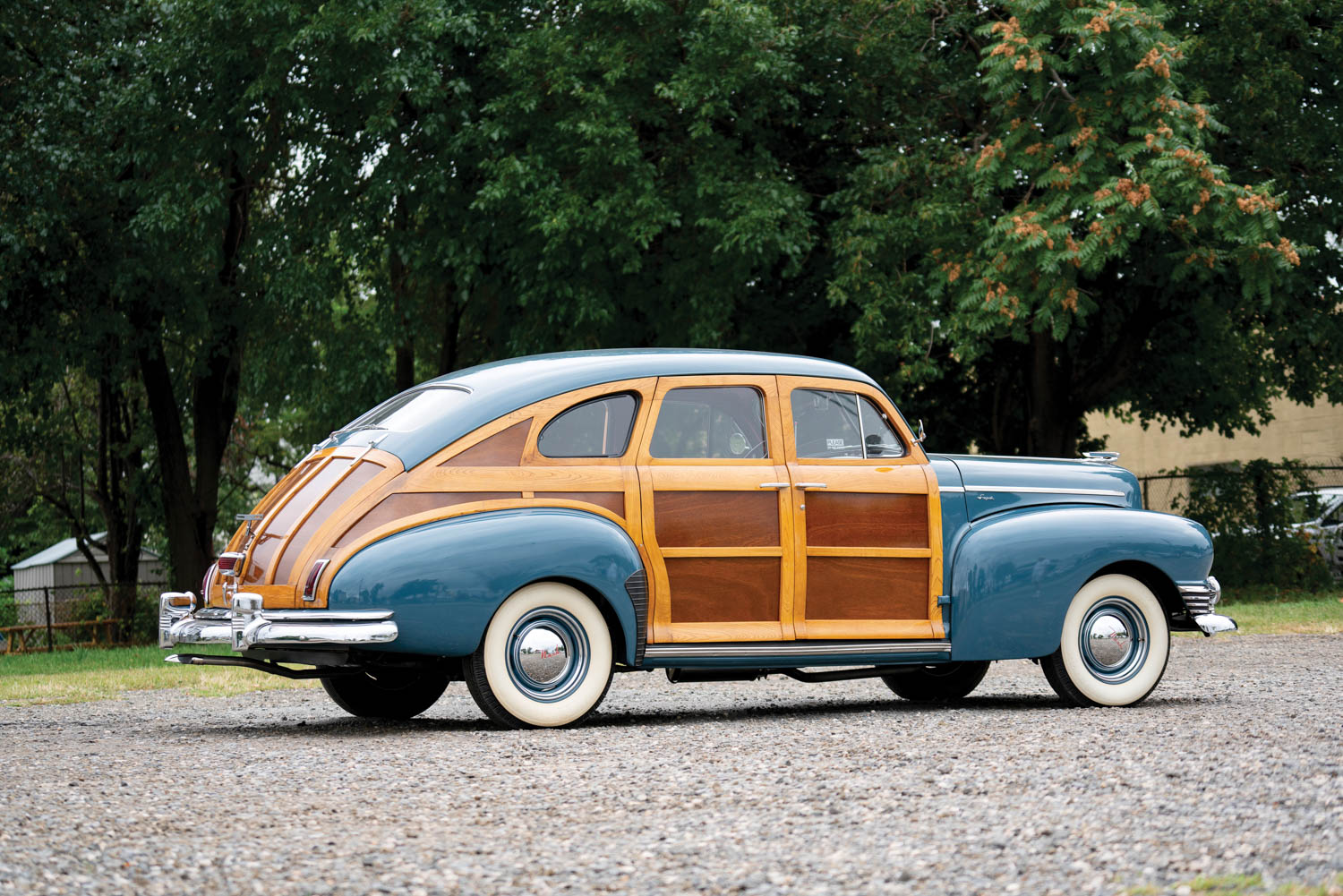Chevy’s mega SUV is the oldest—but not the only—of its kind
Although the Chevrolet Suburban is well known by consumers, it wasn’t the only model to wear the appellation.
The name was once a generic term used before World War II to describe station-wagon-type vehicles advertised by such automakers as Chevrolet, Dodge, GMC, Nash, Plymouth, and Studebaker. Although these wagons employed each OEM’s platform, they were finished by outside suppliers using unique wood body panels, and promoted for commercial and delivery use rather than for homeowners. That changed after World War II as newly formed families filled growing suburbs. As the usefulness of station wagons became apparent, and sales increased, they became the vehicle of choice for carpool duty and chores associated with family life.
As a result, no fewer than five marques used the Suburban model name (some of them concurrently) during the 1940s and ’50s. Amazingly, it wasn’t until 1988, 10 years after Plymouth dropped the Suburban name, that it became a General Motors trademark.
Here are the vehicles known as Suburban.
Chevrolet/GMC Carryall Suburban (1935–present)

The 1935 Carryall Suburban was the first eight-passenger, steel-body station wagon, priced at $580. Sold with two, three, or four doors, it was powered by Chevrolet’s 60-horsepower six-cylinder engine. Chevy’s small-block V-8 and two-speed automatic transmission arrived in 1955, followed by four-wheel drive two years later. A conventional four-door model was added in 1973, and full-time four-wheel drive was a new option, completing the formula for all modern SUVs. GMC Suburbans were similar but marketed towards commercial customers, while Chevrolets were geared towards private users.
Nash Ambassador Suburban (1946–1948)

The rarest of the Nash post-war body styles is the wood-bodied Ambassador 60 Suburban Sedan, and Nash’s most expensive car at $2247. Even though the Ambassador was designed to compete with Cadillac and Lincoln, Nash dropped its straight-eight engines in favor of an updated version of Nash’s prewar six, an overhead valve inline six-cylinder engine rated at 112 horsepower. Despite this, it was chosen as the 1946 Indianapolis 500 pace car. Options included air conditioning, a radio, and turn signals. During its three-year production run, about 1000 were built; approximately a dozen survived.
DeSoto Custom Suburban (1946–1951)

DeSoto’s most expensive model, the long-wheelbase Suburban sedan, featured three rows of full-size seats, and a lack of separation between the cargo hold and the passenger compartment. Its third-row seats fold flat, while the second row folds forward against the front seats, allowing for more than 80 cubic feet of cargo space. DeSoto claimed it easily slept two. Under the hood, DeSoto’s absurdly-named “Powermaster Six” produced 112 horsepower. Mostly forgotten today, the Suburban would gain a scintilla of fame in the 1970s as the Cunningham family car on the ABC-TV sitcom “Happy Days.”
Plymouth Suburban (1950–1978)

Introduced for 1950, Plymouth’s Suburban was a two-door station wagon with room for six passengers and powered by an ancient 97-horsepower six-cylinder engine through a three-speed manual transmission. When Plymouths were restyled for 1955, a four-door Suburban wagon joined the two-door, along with an optional V-8 engine, two-speed automatic transmission, and air conditioning. The Suburban name was used as a standalone series some years, and as a trim level in others until 1962. It was revived for 1968 on Plymouth’s full-size wagons, particularly on Fury, and later, Gran Fury wagons. Plymouth dropped the name, along with their full-size models, for 1979.
Dodge Suburban (1954–1958)

Call it a case of nameplate envy, but Dodge used the Suburban name on its two-door wagons when its lineup was redesigned for 1953, while four-door wagons used the name Sierra. Power came courtesy of the laughably-named “Get-Away Six,” an L-head engine that developed 103 horsepower. The following year saw the six get a power upgrade to 110 horses, along with a new optional “Red Ram V-8” rated at 150 horsepower. Dodge continued to use the Suburban name until 1959, when two-door wagons and the Suburban name were dropped.








